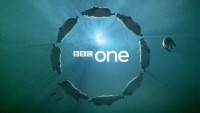Profile: Red Bee
Red Bee Media, formerly BBC Broadcast, is a multi-disciplined agency that encompasses design and technology while producing top quality work for all the major UK broadcasting channels. Michael Burns finds out more about the creative powerhouse.
With a glittering record of high-profile work from around 270 creative staff, Red Bee Media is in the design companies super league. But that's just a fraction of the workforce - there are 1,400 people at Red Bee Media, with the creative team increasingly working with the technical departments to create new platforms for mobile phones and broadband television.
Red Bee Media specialises in a variety of areas, including channel branding, title sequences, interactive commercials, websites, user interfaces and online banners. That the agency is so focused on the broadcast sector isn't surprising once you know about its history.
Red Bee Media can trace its heritage to the start of BBC Television, where it provided vital playout, channel branding and promotion, as well as access services. Formerly known as the BBC's Broadcasting and Presentation department, it was incorporated in April 2002 into a commercial subsidiary, BBC Broadcast. Broadcast's main client was the BBC, but the freedom to work for other clients meant it could use BBC expertise to earn money to put into programme making.
"In August 2005 the BBC sold us to an investment group to enable us to grow, and we rebranded to Red Bee Media in October that year," says Charlie Mawer, executive creative director of the company. "Since then, our new owner's investment has allowed us to expand into new markets, and we have ambitious international expansion plans."
That's not to say that Red Bee has severed all links with its former home. In fact 70 per cent of the company's work is for the BBC, and Red Bee maintains a contract to provide the broadcaster with a range of services. Since 2003, it's operated from the state-of-the-art Broadcast Centre in West London.
New name, new look
Rebranding was an intensive and complex process. "We needed to establish a brand name that could be trademarked globally in a wide variety of sectors," Mawer explains. "We had five months to find a name, register it and rebrand the company. The name emerged as something neutral in tone, that could work for both a funky creative agency and a heavyweight playout facility."
"We wanted a name that reflected where we've come from," says CEO Pam Masters. "When we were Broadcasting and Presentation we were known as B&P. As BBC Broadcast we had been known as BBCB. So an evolutionary step was to play with the letter 'B'. The spelling as 'Bee' came from an internal brainstorm when we were looking at nature's expert navigators, because as a company facing the digital future we need to help the consumer become equally adept as navigators. We've always used red as our colour property and this added strength to the name."
The visual identity came from the creative agency Antidote, working with Red Bee's in-house design teams. The distinctive logo, featuring a stacked 'Red' and 'Bee', includes horizontal bars, which reference graphic equalisers, mobile phone strength bars and the Broadcast centre architecture.
"When we saw the design for our logo, we just fell in love with it," says Mawer. "It encountered little resistance within the company." But highlighting changes to such an integral part of the BBC framework was no simple task. "When we rebranded it was important to quickly raise the profile of Red Bee Media in the industry," says Mawer. "We had to make sure the industry knew that behind the new Red Bee name was 40 years' experience in broadcast design. To do this we invested in significant advertising campaigns in publications such as Broadcast and ramped up our public relations activity to make sure all the right publications knew what we were up to. It also helped that in our first week as Red Bee Media we won loads of important industry awards."
Busy Bees
Red Bee currently produces upwards of 3,000 pieces of audiovisual content a year, so not surprisingly teams do tend to work on more than one project at a time. "In fact, when we were an internal BBC department we were the third-largest producer of content after news and sport," says Mawer.
With such a workload, the Red Bee executives must ensure that their creatives stay inspired by what they do, whatever project they are working on. "Working in multi-disciplined teams across the creative business means designers are working with professionals, who all offer different perspectives to produce surprising results," says head of design, Jeff Conrad. "We also work on a wide variety of projects offering real diversity. Throw in the fact we work all over the globe and there's plenty of opportunity for people to stay fresh!"
But Red Bee Media still has to chase for new work. "We follow the same process as most companies in our sector," says Mawer. "It's all about utilising PR and new business drives that will hopefully lead to invitations to pitch for projects. When we're allocated to a pitch we appoint account teams, creative resources and try and collaborate with cross-disciplinary teams. A team trying to crack a channel-branding project might include copywriters, directors, programme makers and interactive programmers, with our department."
Despite the workload, quality does show. The NMA Top 100 Interactive Agencies report rated Red Bee Media as the fourth most efficient design and build agency. Over the past year the company has won over 20 awards at the Promax&BDA UK, Europe and Asia competitions. The team also won a Gold at the British Television Advertising Craft awards and the Grand Prix at the Shark awards.
In Design Week's Top 100 Design Groups survey, Red Bee Media was ranked as 6th. In the same survey it was ranked 4th in the Top 10 Branding and Packaging Agencies' and its ITV rebrand was ranked as 9th in the 100 Moments of the Year. "The ITV rebrand was a great win for us last year," says Conrad. "It involved creating an overall brand architecture for the network and to rebrand each channel to make it clear what each one stood for."
New blood
Mawer says the company actively recruits from an eclectic background, rather than either traditional advertising or media firms. "We believe the only skill you need is to generate ideas, and we can teach the rest," he explains. "Out of the 3,000 applicants we get for traineeships we've recruited people as diverse as a Liberty print designer, a vet from Hong Kong and a policeman. Having said that, our creative directors come from conventional fields - advertising, programme making and design."
The company does take on design graduates, but according to Jeff Conrad, UK courses don't necessarily provide fully-formed Red Bee creatives. "Actually we're finding that as the number of media platforms increase, the traditional boundaries between design disciplines are blurring," he says. "This can mean that the design skills covered in a course are wide and varied. Many graduates have multi-platform skills, but not the depth of knowledge they'd have from studying just one discipline. The training curve for motion graphics can be steep when graduates join us."
So what's next? "We're focused on developing our expertise in the new challenges facing the broadcast industry with the onset of IPTV and mass-market broadband-on-demand content," Mawer reveals. "Designing, navigating and promoting in this world will need the learning of a whole new skill set, as well as the application of our traditional strengths. In addition, we're opening offices in China, and other territories. The challenges facing TV channels are pretty universal after all."
PROJECT FOCUS: BBC ONE IDENTITY
Red Bee Media has its roots in the BBC, so who better to design a new screen identity?

DEVELOPMENT TIME: Six months
LAUNCH DATE: 7 October 2006
SIZE OF DEVELOPMENT TEAM: 12
Red Bee Media pitched against eight agencies to win the task of creating a new on-screen identity for BBC One. "Perhaps the toughest challenge, apart from the weight of history on your shoulders, is the target audience - everyone in the UK," says creative director Charlie Mawer.
"Few briefs are as all-embracing as BBC One, and winning universal popularity is quite a hurdle," he continues. "It's easier to define yourself in the multi-channel world by narrow target audiences, where your attitude can be as much about who you aren't talking to as who you are."
The team was inspired by how Peter Fincham, BBC One controller, talked about his channel. "In a world where audiences are constantly fragmenting, the need for a channel that unites and gives us shared experiences is vital," says Mawer. "The idea of people coming together came from this. A circle was conceived as the shape we make when we gather to listen to stories, as a subtle nod to BBC One's heritage and as a timeless symbol of unity - from wedding rings to yin and yang."
The circle-themed idents range from bikers performing in a circle of gravity-defying riding, to swimming 3D hippos, a wheeling formation of stunt kites and children playing ring-a-roses. Red Bee also commissioned font foundry Fontsmith to come up with a new typeface.
Colour was the one point of continuity from the pre-existing design of the channel. "The design came from our ambition to put the new logo at the heart of the screen as if the channel is the thing that draws an audience around it," says Mawer. "The lowercase typeface gave a more modern slant to the word 'one'. The font was also designed to give us instant brand recognition, both on and off air."
"For the Onscreen Presentation System, all elements were conceptualised on paper," says Mawer. "Storyboards were made using Photoshop CS2 and animated in After Effects 7. We then took Targa sequences on to an AVID DS to master."
INFO www.redbeemedia.com

Thank you for reading 5 articles this month* Join now for unlimited access
Enjoy your first month for just £1 / $1 / €1
*Read 5 free articles per month without a subscription

Join now for unlimited access
Try first month for just £1 / $1 / €1
Get the Creative Bloq Newsletter
Daily design news, reviews, how-tos and more, as picked by the editors.

The Creative Bloq team is made up of a group of art and design enthusiasts, and has changed and evolved since Creative Bloq began back in 2012. The current website team consists of eight full-time members of staff: Editor Georgia Coggan, Deputy Editor Rosie Hilder, Ecommerce Editor Beren Neale, Senior News Editor Daniel Piper, Editor, Digital Art and 3D Ian Dean, Tech Reviews Editor Erlingur Einarsson, Ecommerce Writer Beth Nicholls and Staff Writer Natalie Fear, as well as a roster of freelancers from around the world. The ImagineFX magazine team also pitch in, ensuring that content from leading digital art publication ImagineFX is represented on Creative Bloq.
